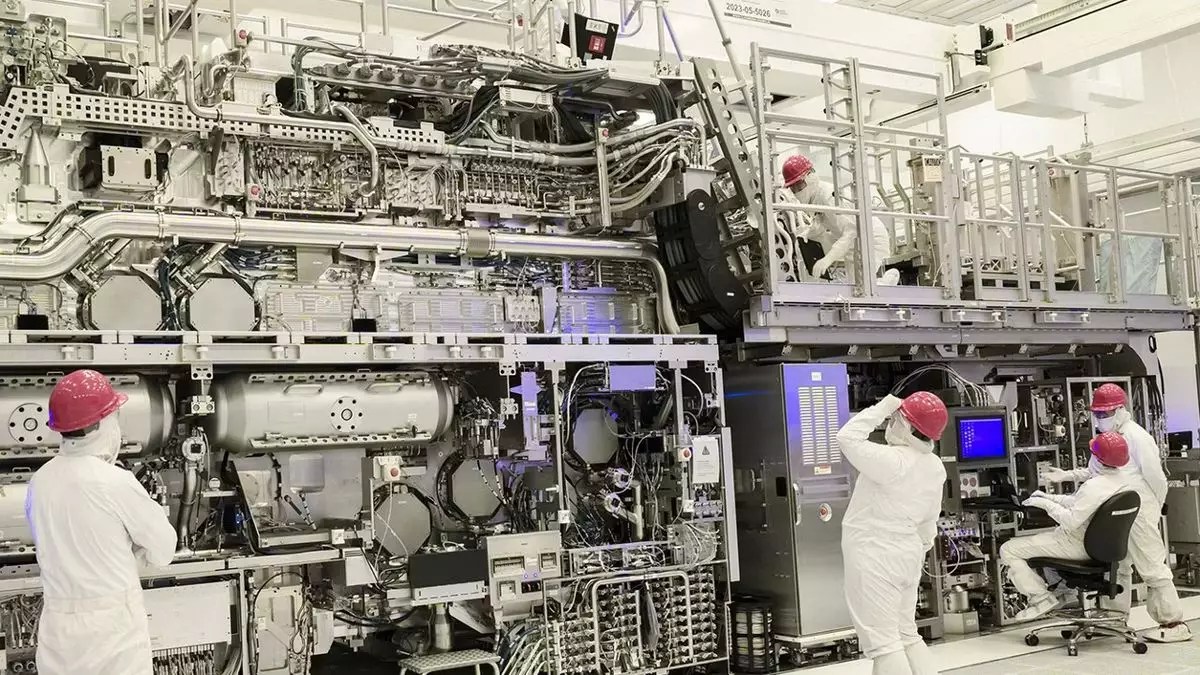The announcement that Intel’s 18A chip production node is “now ready” marks a significant chapter in the evolving landscape of semiconductor manufacturing. With a newly launched landing page on Intel’s official website, the anticipation surrounding this advancement cannot be overstated. The implications of this technology, particularly as it pertains to laptops and desktop PCs, have sparked a dialogue in the tech community about the balance between readiness and actual deployment. Intel has already indicated plans to implement its Panther Lake laptop chip and its Nova Lake desktop CPU utilizing the 18A node. However, release dates appear to project into early 2026, prompting questions regarding the actual readiness of this technology for consumer markets.
Intel’s intentions seem to extend beyond merely showcasing their forthcoming microprocessors. The emphasis on the 18A node appears to target clients interested in using its foundry services to produce their own chips. The website states that 18A is ready for customer projects with tape-outs expected to begin as early as the first half of 2025. This approach underscores Intel’s ambition to cement its position in the foundry sector, particularly as a formidable alternative to TSMC, the Taiwanese giant predominantly dominating this space.
However, advantageous as their plans might seem, there is a peculiarity regarding the timeline of in-house chip releases. Notably, Intel cited the Clearwater Forest server CPU as an example of the 18A process in action. Originally scheduled for a 2025 launch, the release has now been postponed to the first semester of 2026. Such delays raise eyebrows and question the genuineness of Intel’s claims regarding 18A’s immediate readiness.
Intel’s roadmap, dubbed the “five nodes in four years” (5N4Y) initiative, commenced in the mid-2020s under the direction of then-CEO Pat Gelsinger. The plan encapsulated a range of efforts from the troubled Intel 7 to the forthcoming Intel 18A. However, critical analysis suggests that the achievement of five truly innovative nodes is dubious at best. Many of these nodes have been mere rebranding of existing technologies, casting a shadow on the legitimacy of Intel’s progress.
While Intel prides itself on the introduction of unique technologies with each new node, several have not represented substantial jumps compared to prior iterations. For instance, Intel 7 closely resembles the previously challenging 10nm technology, while Intel 4 has been characterized as a rebranded 7nm process. Consequently, despite the inclusive vocabulary of “new” nodes, only Intel 4 and 18A hold their ground as genuinely innovative advancements.
Despite any setbacks in execution timelines, the 18A node introduces noteworthy technological refinements intended to enhance performance and efficiency. Intel claims the node will provide a 15% boost in performance per watt alongside a 30% increase in chip density compared to Intel 3. Not to be overlooked is the introduction of PowerVia technology, characterized as an industry first for backside power delivery. By integrating power distribution underneath the chip, Intel aims to mitigate resistive losses and improve overall performance.
Additionally, the node leverages RibbonFET gate-all-around (GAA) technology, allowing for increased control over electrical current to limit power leakage. While initial assessments suggest that the density ratio for logic gates in 18A falls short when compared to TSMC’s anticipated N2 node, it finds parity with TSMC’s N3 for SRAM density. This comparison is crucial, considering that SRAM cells are vital for efficient on-chip memory cache.
A successful rollout of the 18A node could reshape the competitive landscape, especially since TSMC has delayed its incorporation of backside power delivery until its A16 node. With the efficacy of backside delivery poised to enhance performance through reduced interference and improved efficiency, 18A has the potential to deliver considerable advantages. However, the sustainability of this technological edge depends on Intel’s ability to maintain its trajectory and meet future deadlines.
The stakes are high for Intel; Gelsinger himself has indicated that the company’s fortunes rest heavily on the success of the 18A node. Given the increasing pressures for affordable and advanced chips, failure to deliver on this promise could undermine Intel’s position in the market. The scrutiny surrounding the calculated skepticism towards 18A reflects a broader concern for ensuring competitive pricing within the industry as Intel pursues a turnaround.
Intel’s 18A node encapsulates both optimism and caution. While it embodies a multitude of technological advancements that could invigorate competitive dynamics in the semiconductor sector, the company’s track record with previous nodes and its ambitious timelines warrant critical examination. The future is still unwritten, but industry observers will be watching closely as to whether Intel can translate these promises into reality, ensuring both its survival and a healthy competitive environment for consumers.


Leave a Reply